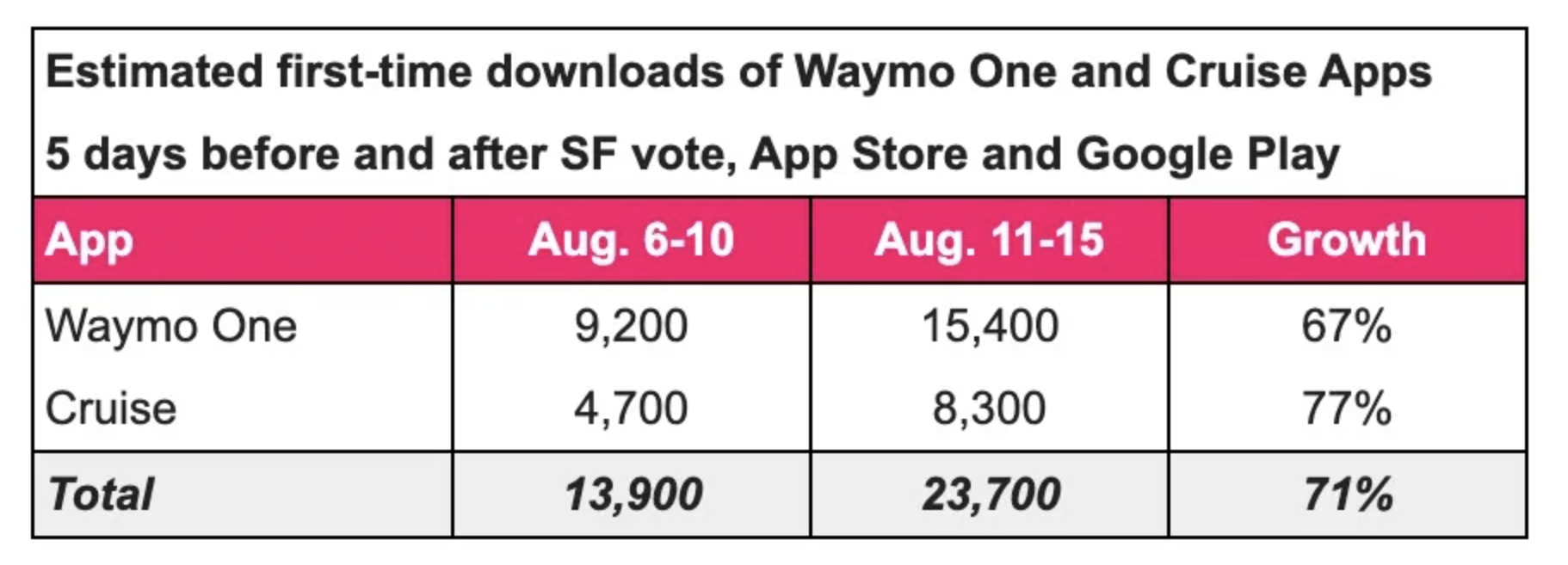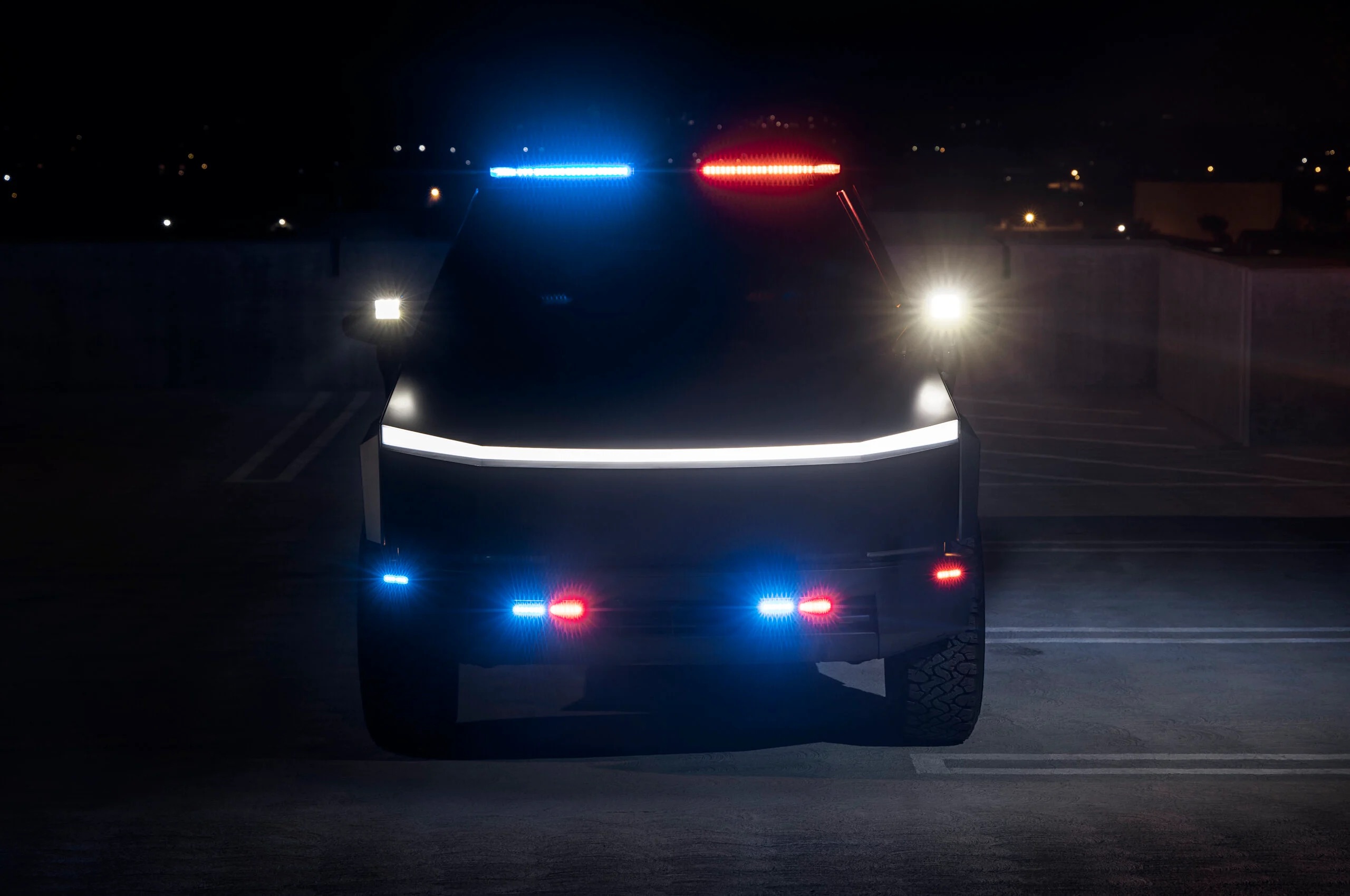Sign up for daily news updates from CleanTechnica on email. Or follow us on Google News!
Waymo and Cruise have been growing incrementally, especially in San Francisco, where they’ve been given the opportunity to operate 24/7 across the city. However, there was a potential robotaxi story outside of the US recently that caught my attention more than any other.
Let’s start with Waymo, though. After getting permission to expand in San Francisco and run day and night there, downloads of the Waymo app (and Cruise app) surged. Here’s the data:
In other words, in the 5 days following the vote, Waymo downloads grew by 67% compared to the 5 days before the vote. Cruise app downloads grew even more, by 77%. Furthermore, “Waymo recently told TechCrunch that 100,000 app users are on the waitlist for the Waymo One service in the San Francisco area.”
Since then, Cruise has faced an unfortunate circumstance, and a former human an even more unfortunate one. Reportedly, a car with a human driver struck a pedestrian who was crossing the street, and then that pedestrian was knocked right into the path of a Cruise vehicle next to the car that originally struck the poor soul. The Cruise vehicle tried to avoid the worst potential harm, but it didn’t have enough time. (Much less seriously, but adding to its troubles, another Cruise vehicle ended up stuck in wet concrete.)
Meanwhile, Waymo quietly went about its business and expanded further in San Francisco and also in Los Angeles. Also, even more quietly, it appears to be moving forward with plans with Geely-owned EV startup Zeekr to partner on robotaxis for the US market, with testing set to begin by the end of 2023. The robotaxi partnership is “proceeding as scheduled,” a company spokesperson has stated.
That’s fine. Progress. (Though, there’s an argument that these robotaxis are more accident prone than humans.) But mass-scale rollout of robotaxis from Cruise and Waymo still seems far out. You could say this next company is even further away from that — much logic would imply so — but I have a feeling it could have even more robotaxis on the road in coming years.
As you can see from the headline, I’m talking about XPeng. I experience XPeng’s self-driving capabilities live but virtually several months ago, and it seemed perfect. Naturally, it’s not 100% perfect yet, but I’m very bullish on it. Interestingly, the company recently acquired Didi’s EV unit. Didi is a super popular ridesharing service in China. With XPeng’s acquisition of Didi’s electric car development arm (valued at about $744 million), the Chinese EV startup will supply Didi with a pipeline of vehicles for its ride-hailing service. There’s no claim these will be robotaxis, but my goodness, I expect they will be eventually (and perhaps eventually is not too far away) and I can see the volume rising rapidly. China moves fast when tech is ready, and it has much in place to facilitate and grow the robotaxi industry.
“The all-stock deal with Didi calls for Xpeng to launch an A-class model next year under a new brand, in a project called MONA, which will be priced in the 150,000 yuan ($20,000) price tier. Xpeng’s current offerings are mostly priced above 200,000 yuan,” Reuters reports. “As an EV startup, we are not as skilled as established automakers like Volkswagen in terms of scale and cost management in the 150,000 yuan segment…the partnership with Didi will ensure better-than-expected initial scale for the car and achieve a combination of goals in innovation and supply chain management,” Xpeng Chief Executive He Xiaopeng told Chinese media, according to a company-provided transcript. Production of these mass-market MONA cars should begin in the second half of 2024.
We’ll see, but a massive ride-hailing network combined with a hot, high-tech EV startup that has already developed super self-driving software looks like a combo made in heaven to me.
Have a tip for CleanTechnica? Want to advertise? Want to suggest a guest for our CleanTech Talk podcast? Contact us here.
EV Obsession Daily!
I don’t like paywalls. You don’t like paywalls. Who likes paywalls? Here at CleanTechnica, we implemented a limited paywall for a while, but it always felt wrong — and it was always tough to decide what we should put behind there. In theory, your most exclusive and best content goes behind a paywall. But then fewer people read it!! So, we’ve decided to completely nix paywalls here at CleanTechnica. But…
Thank you!
Tesla Sales in 2023, 2024, and 2030
CleanTechnica uses affiliate links. See our policy here.






.jpg)